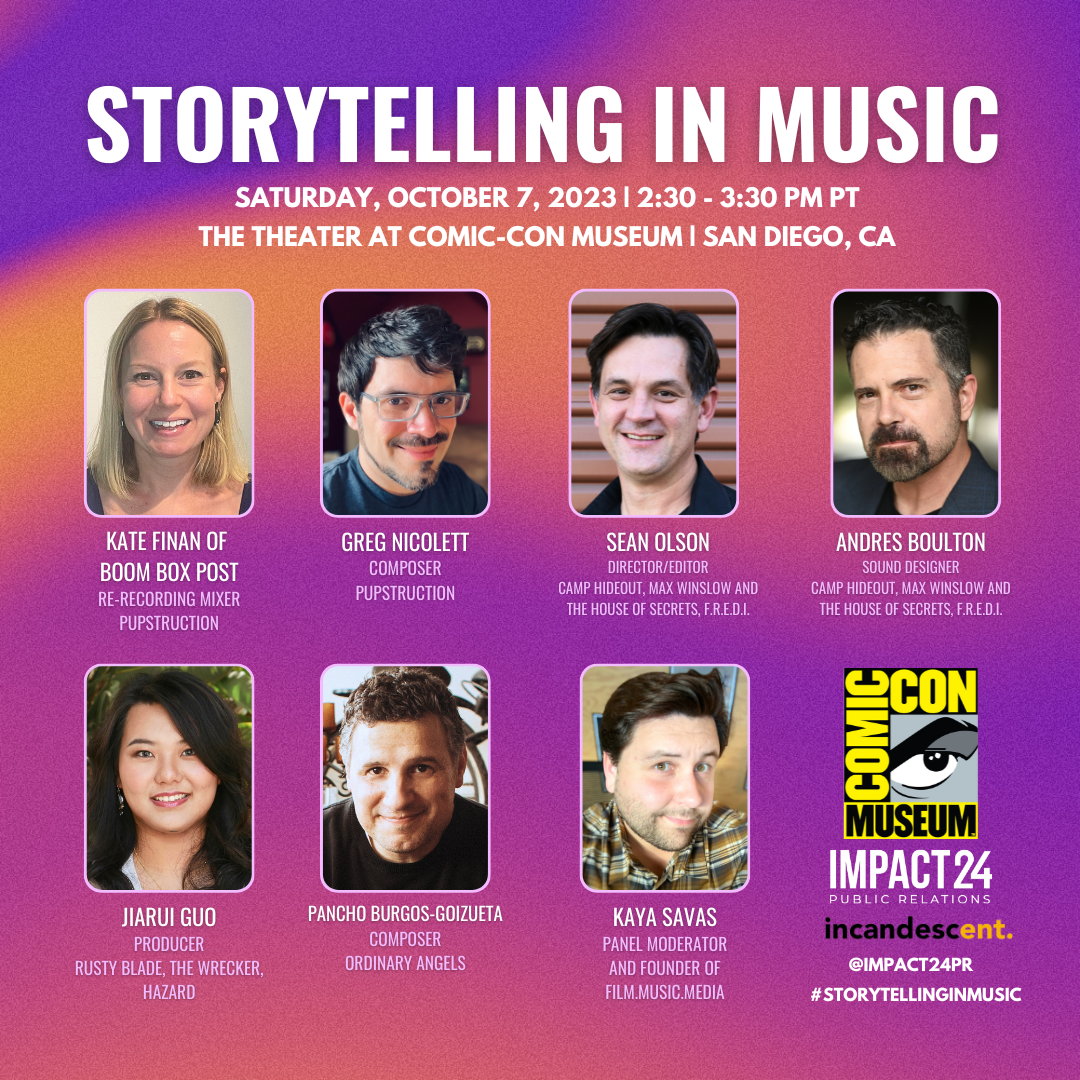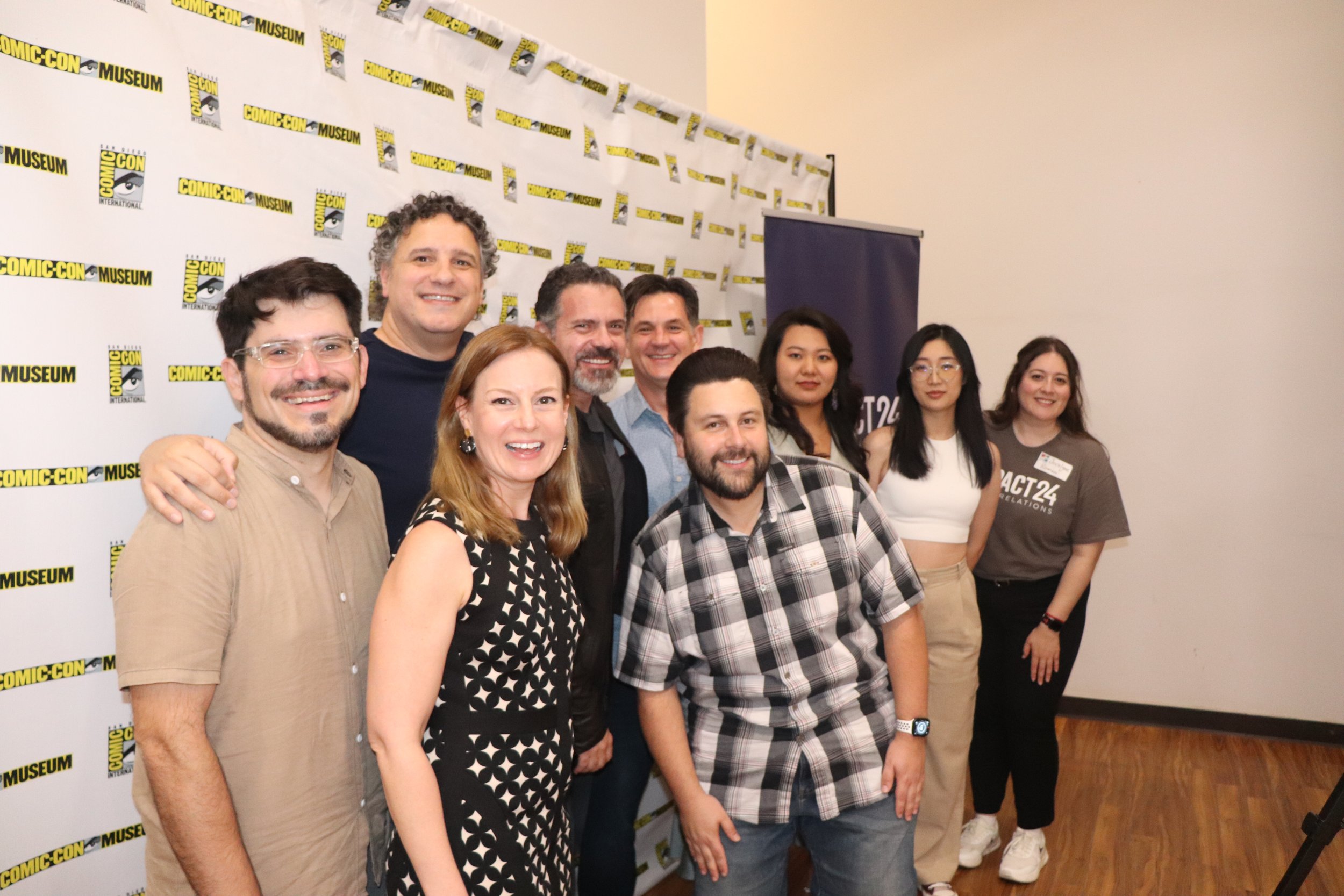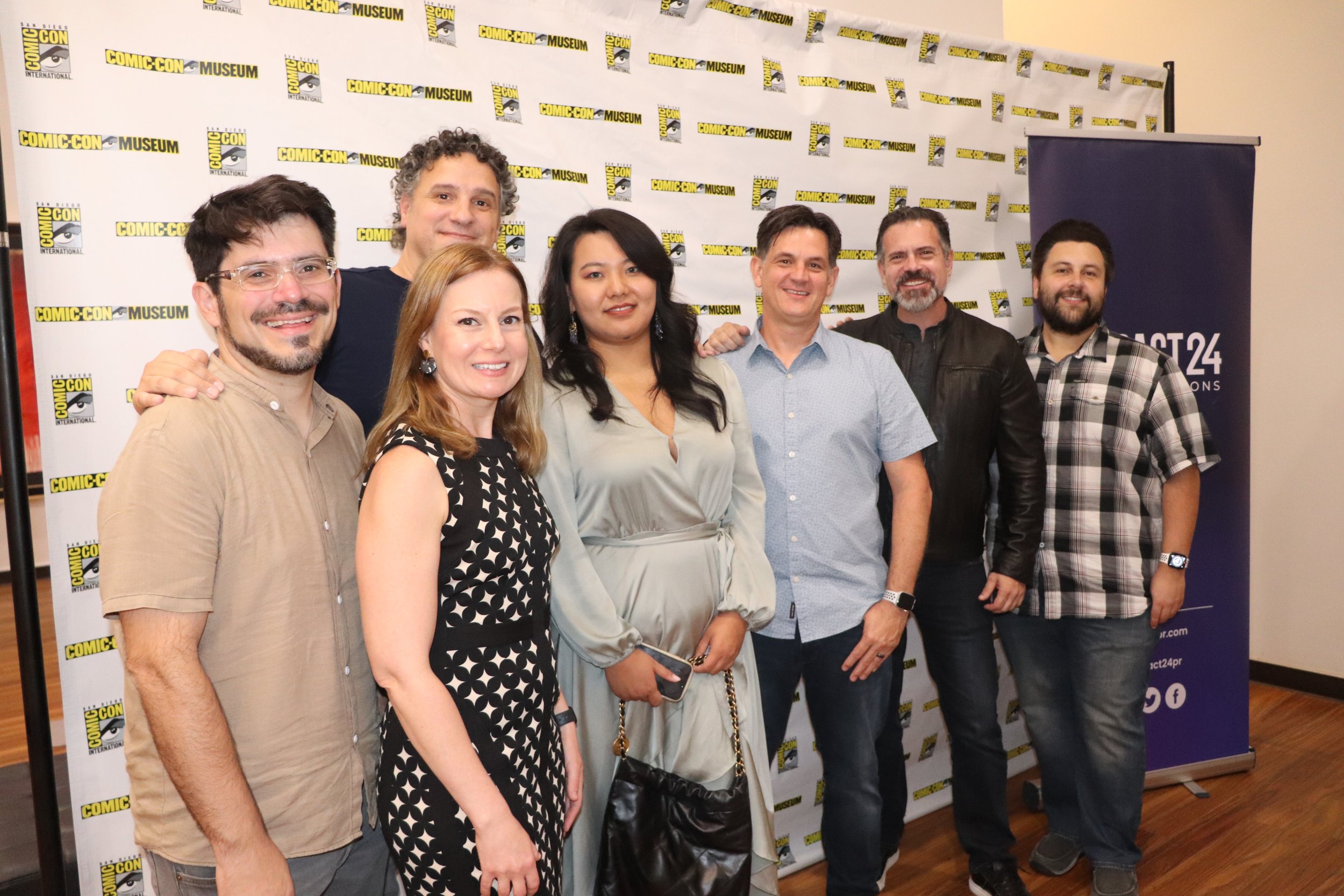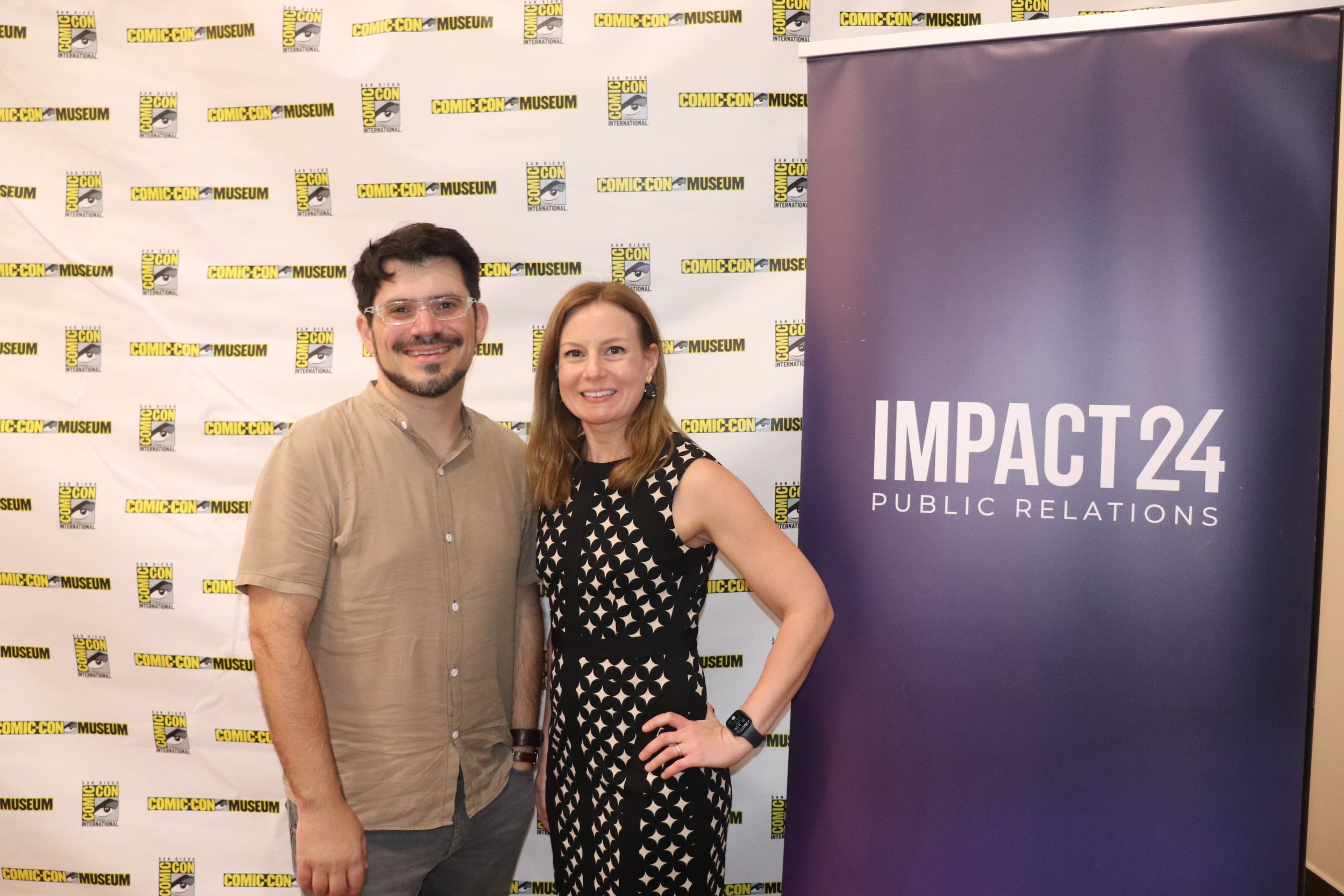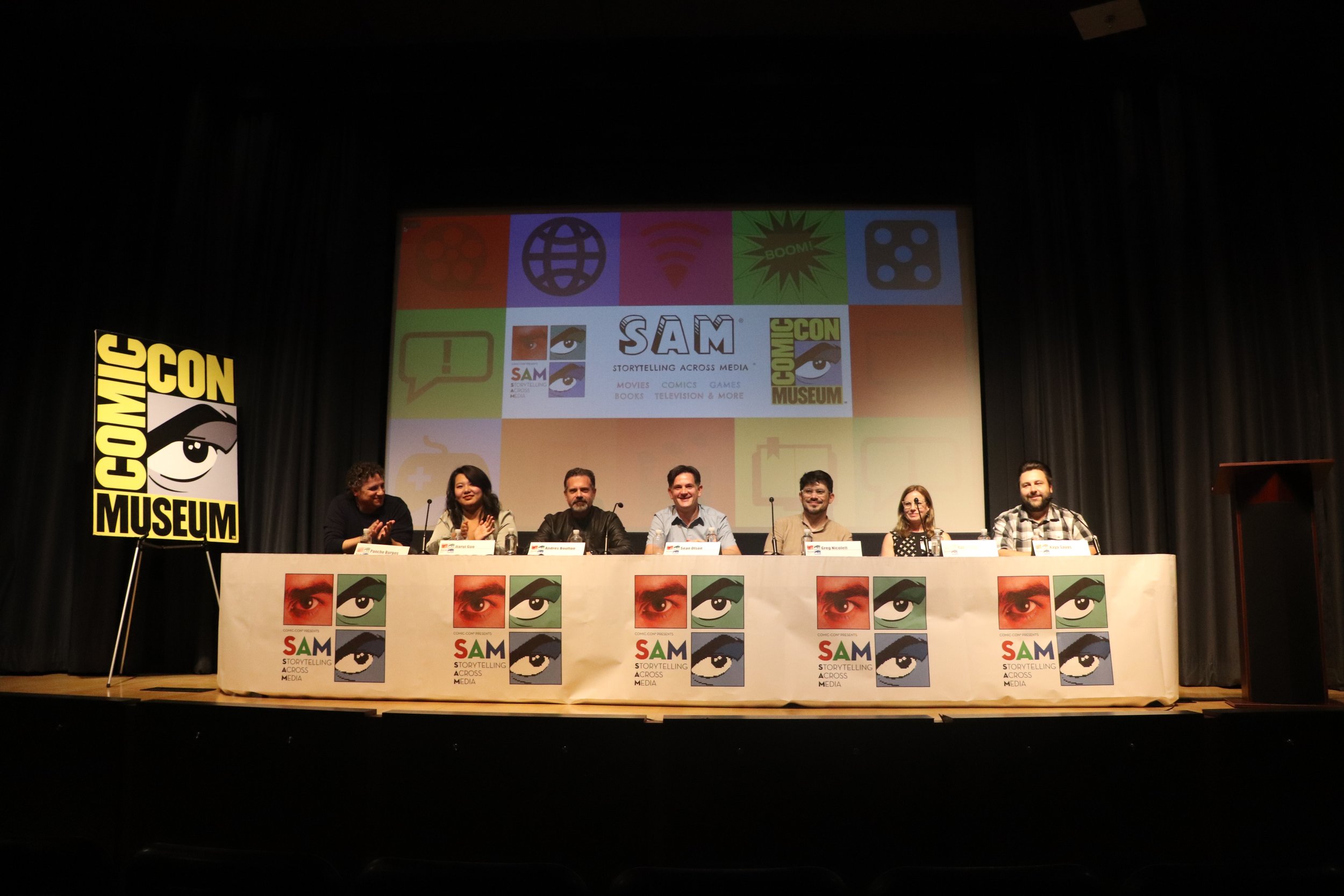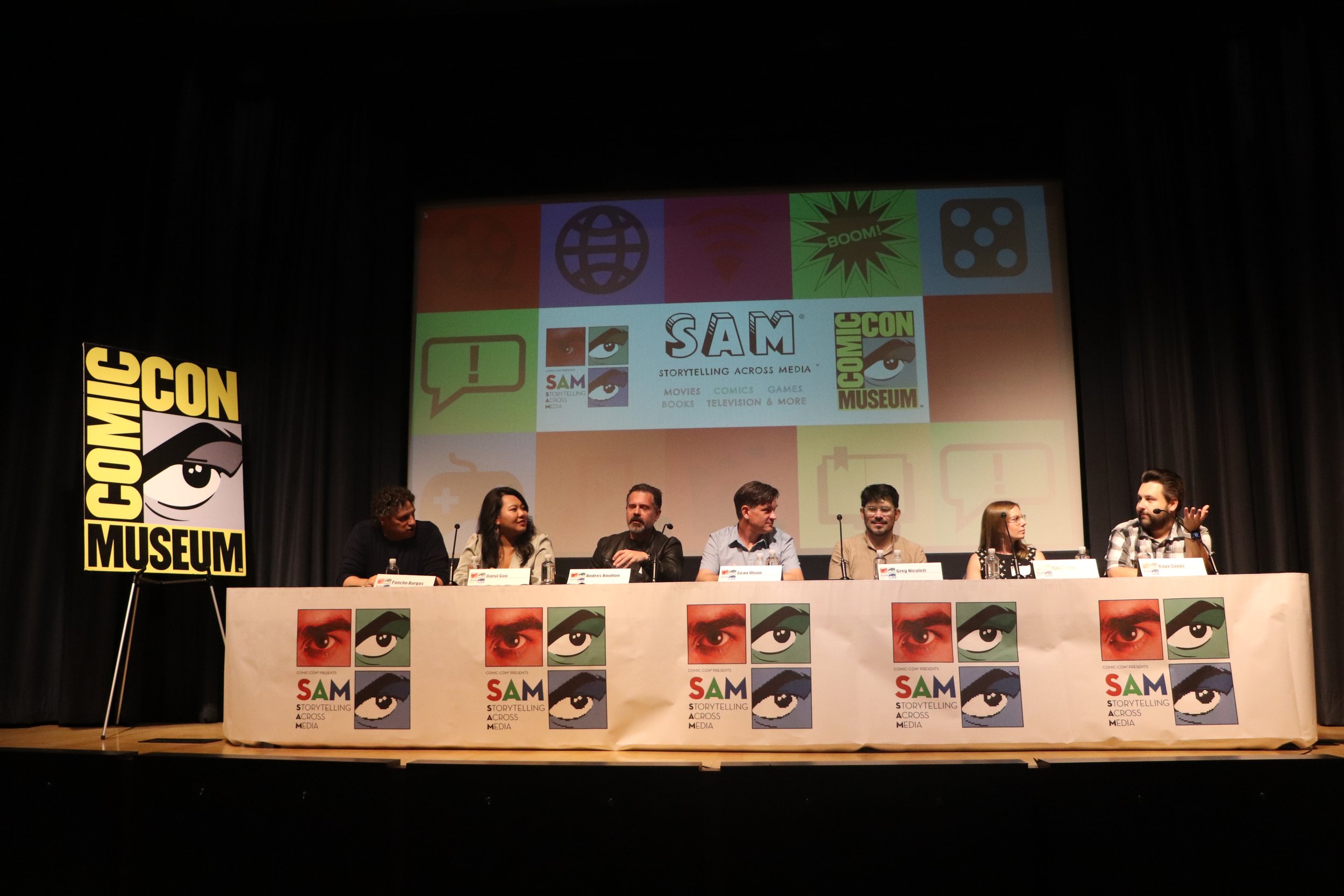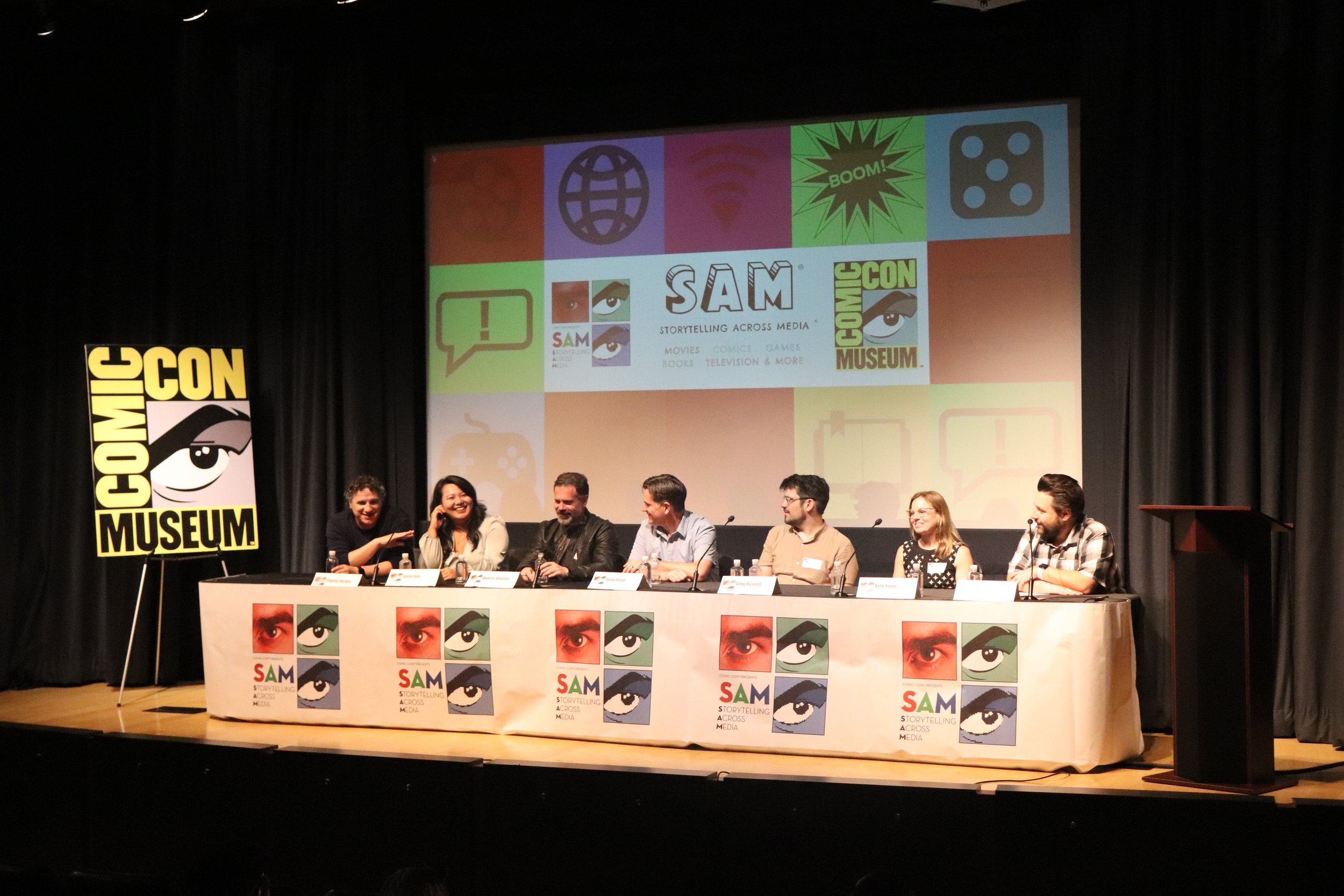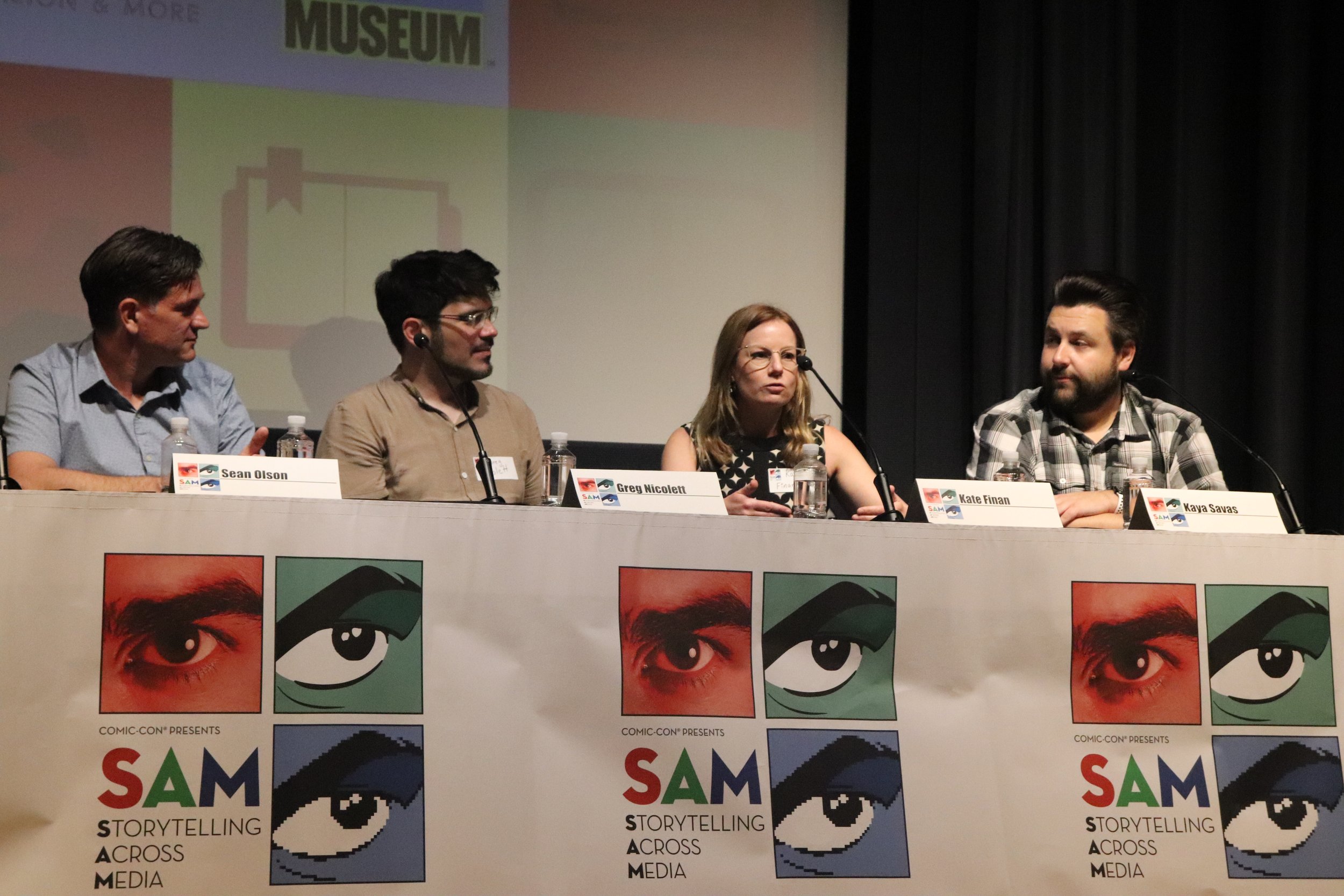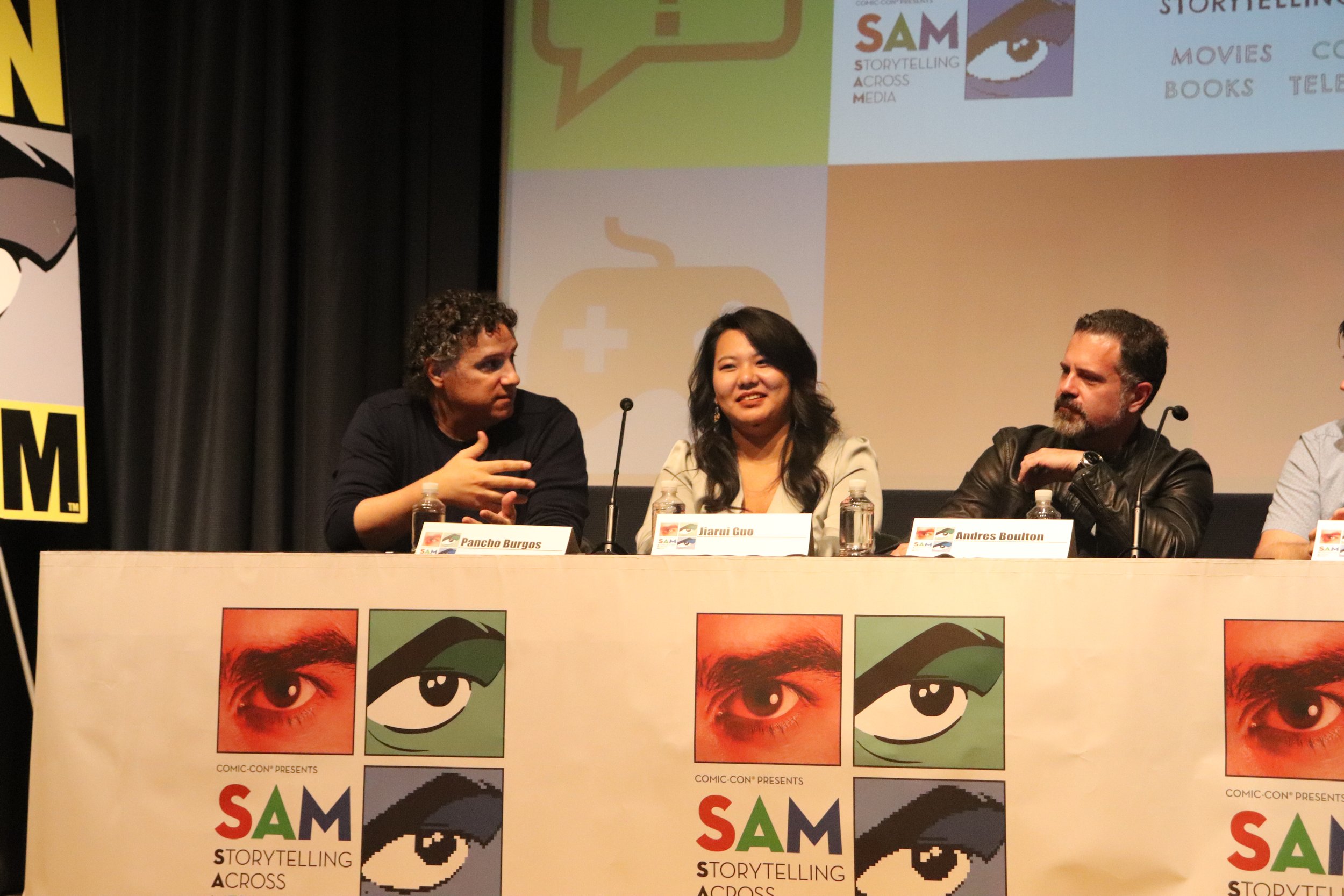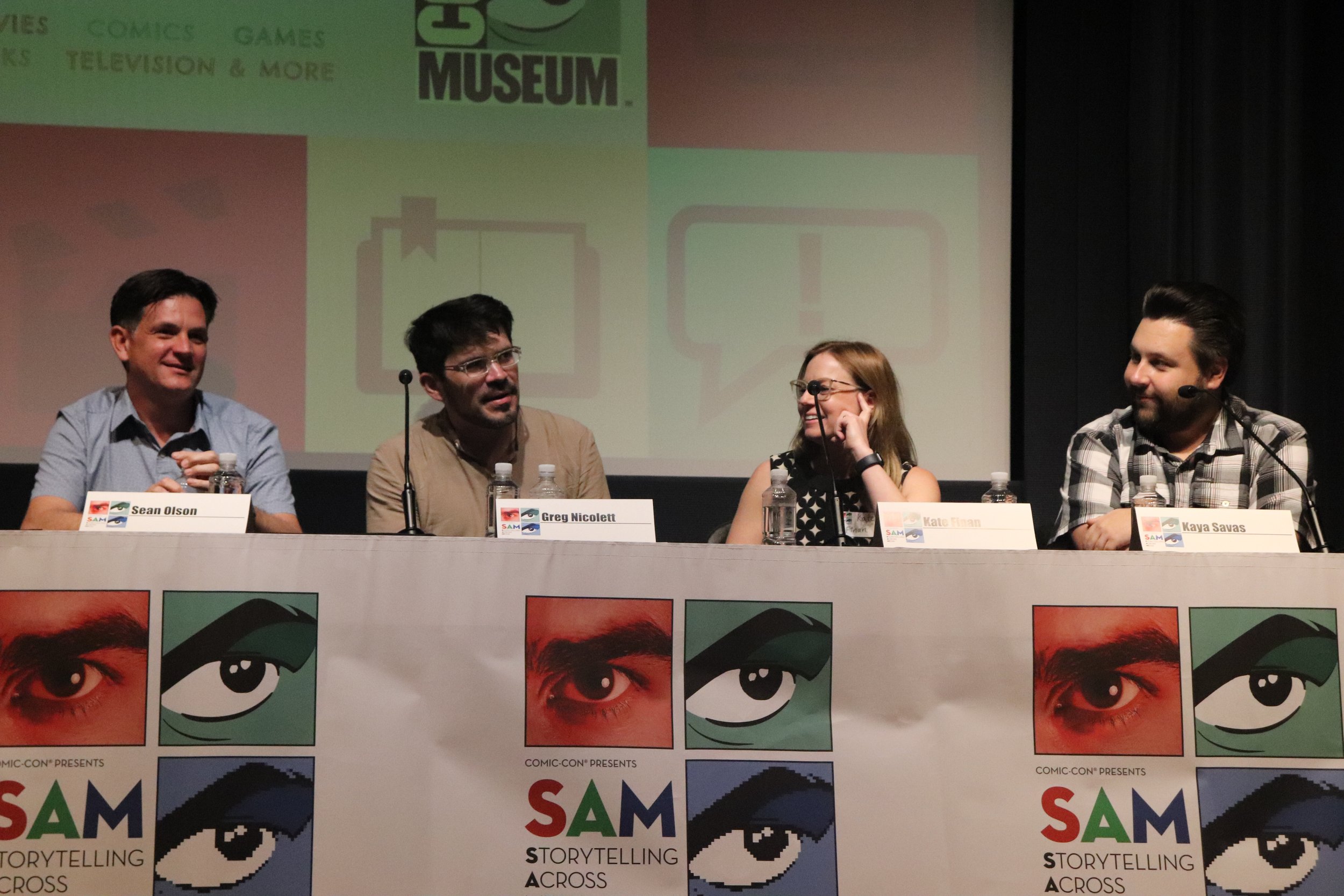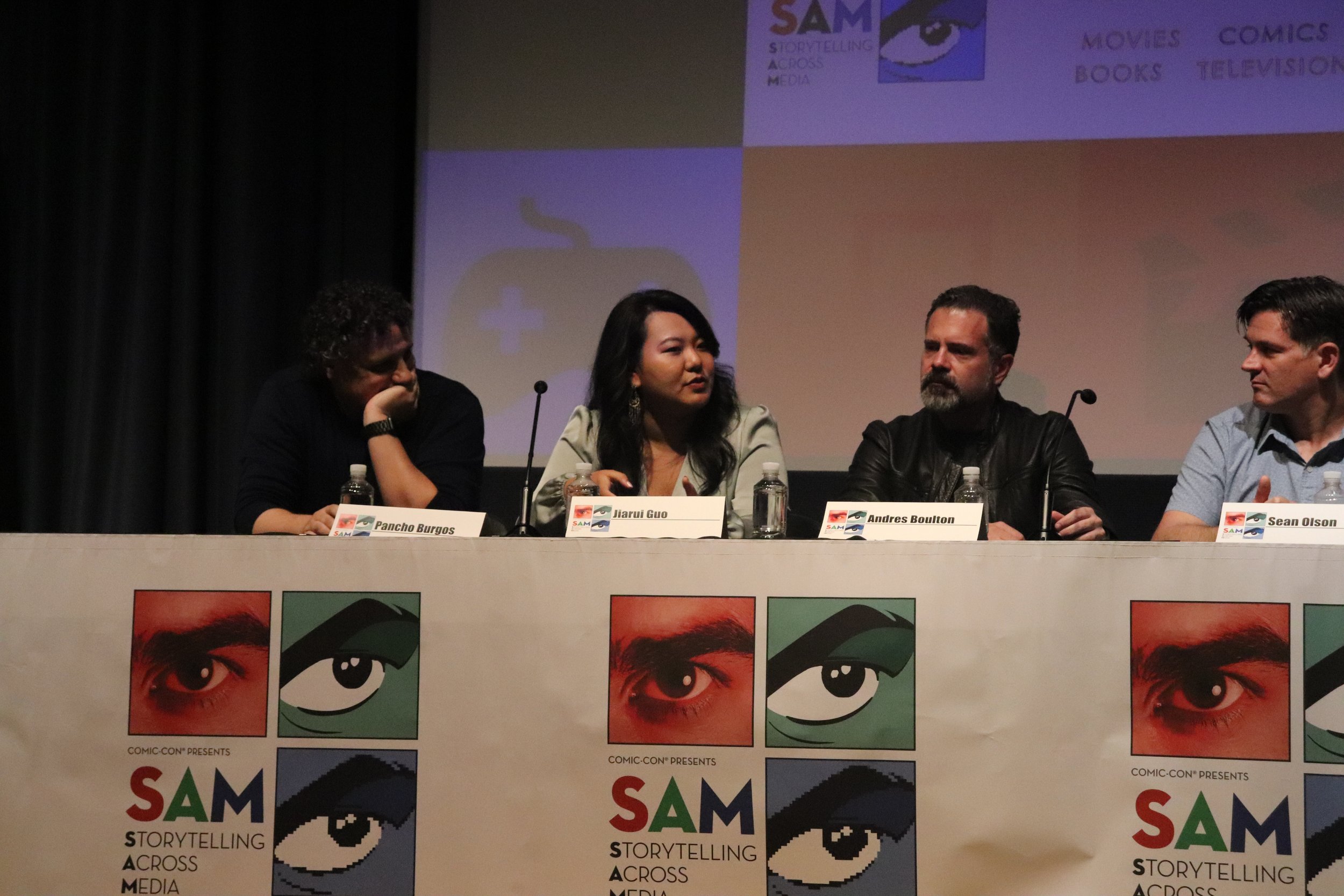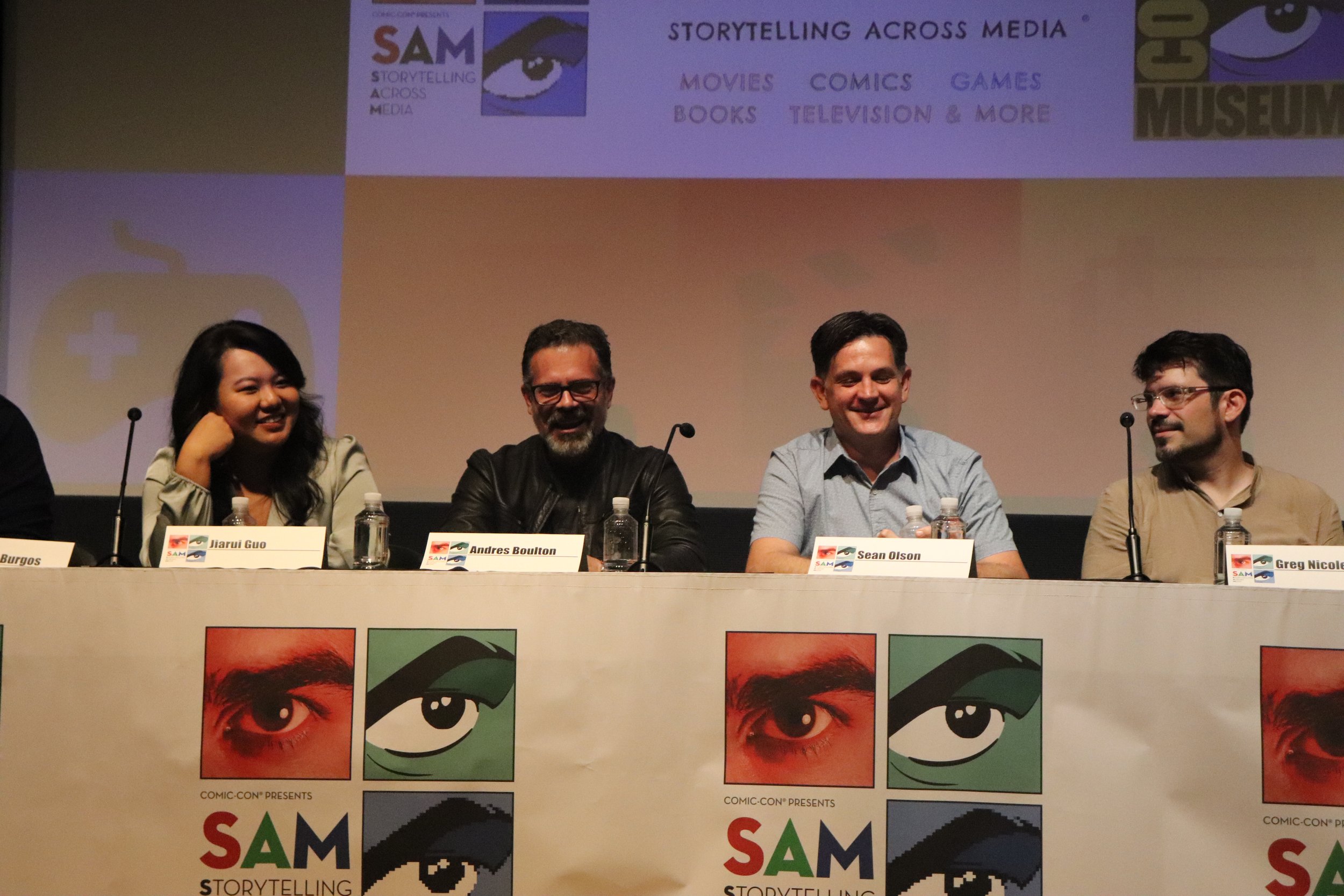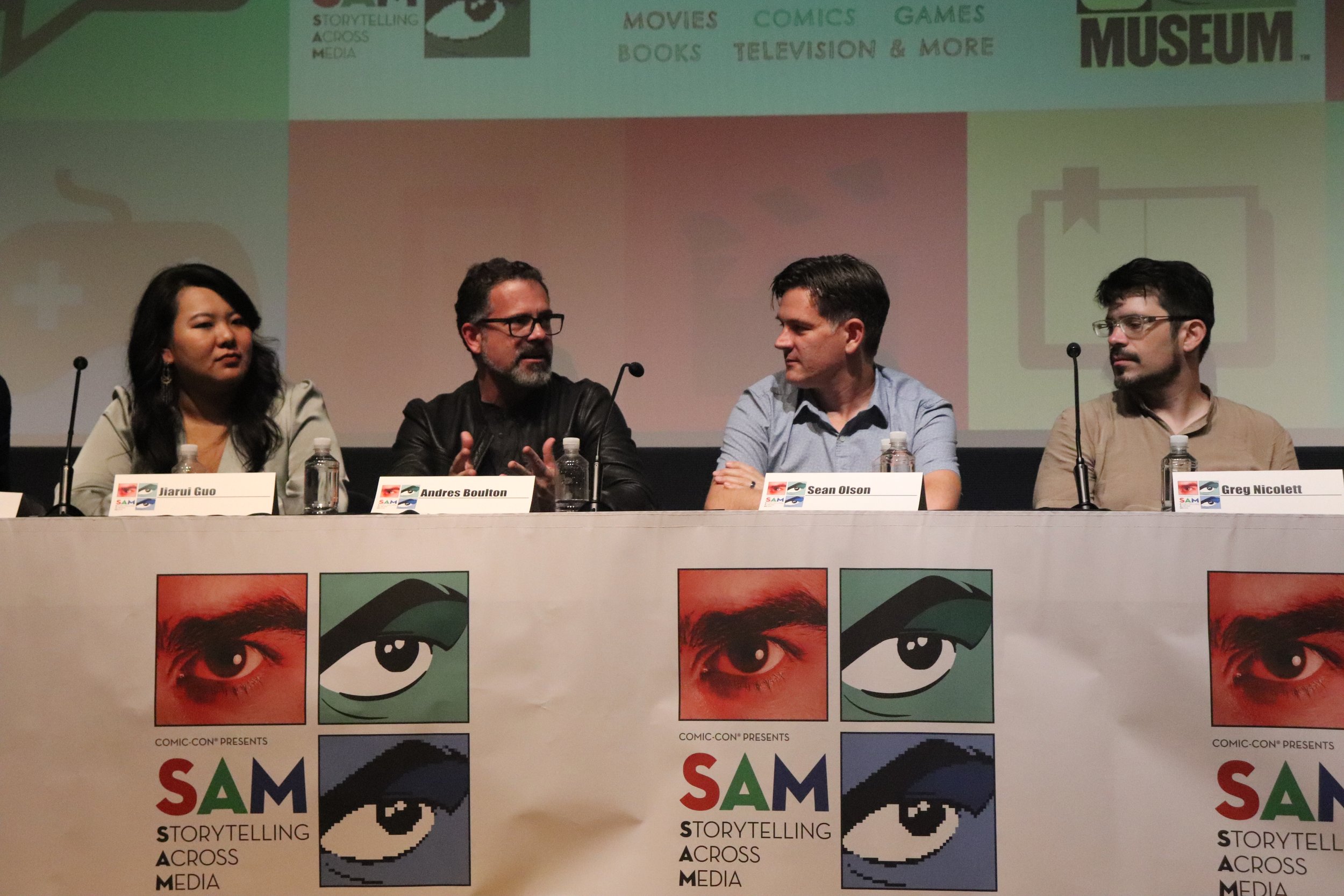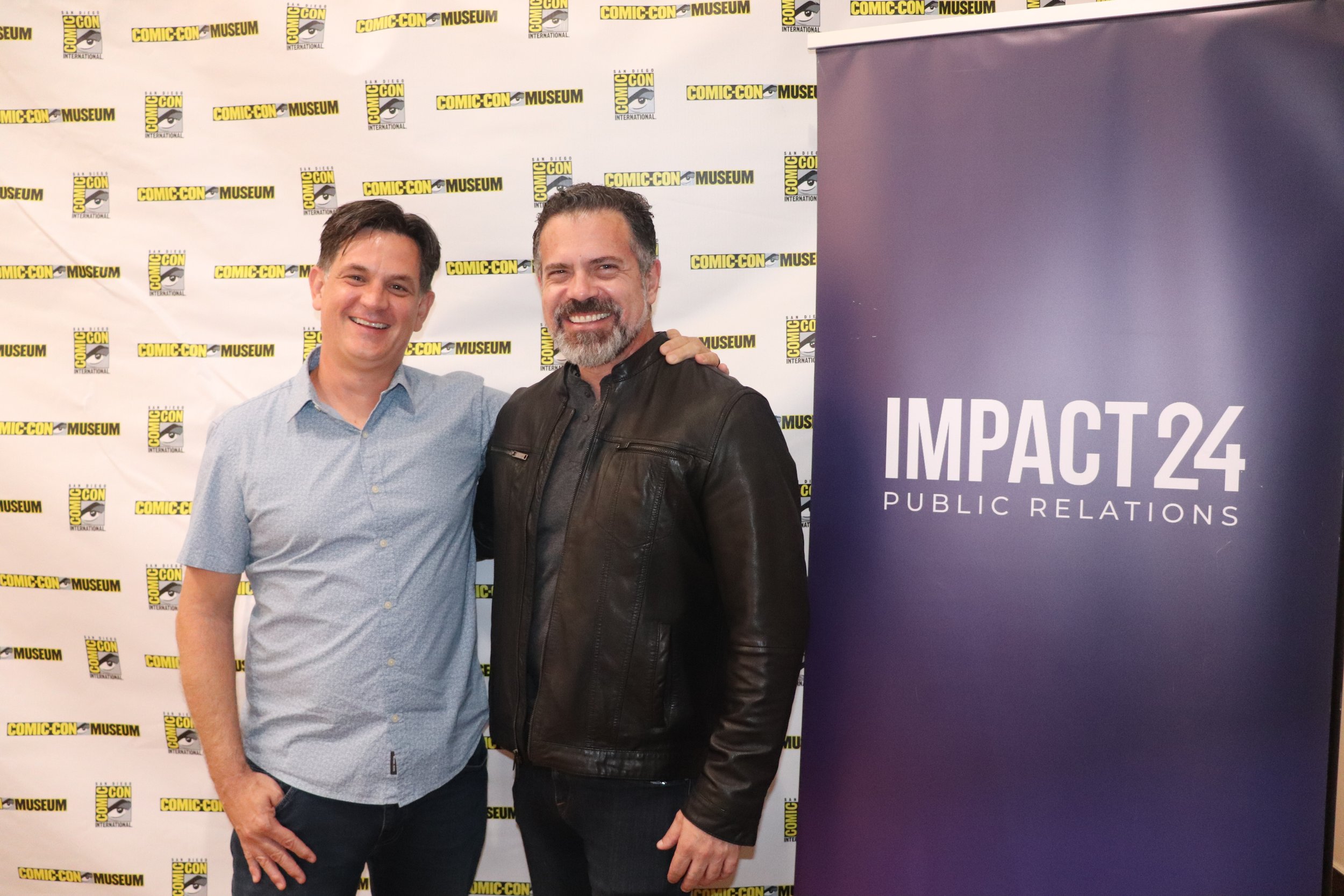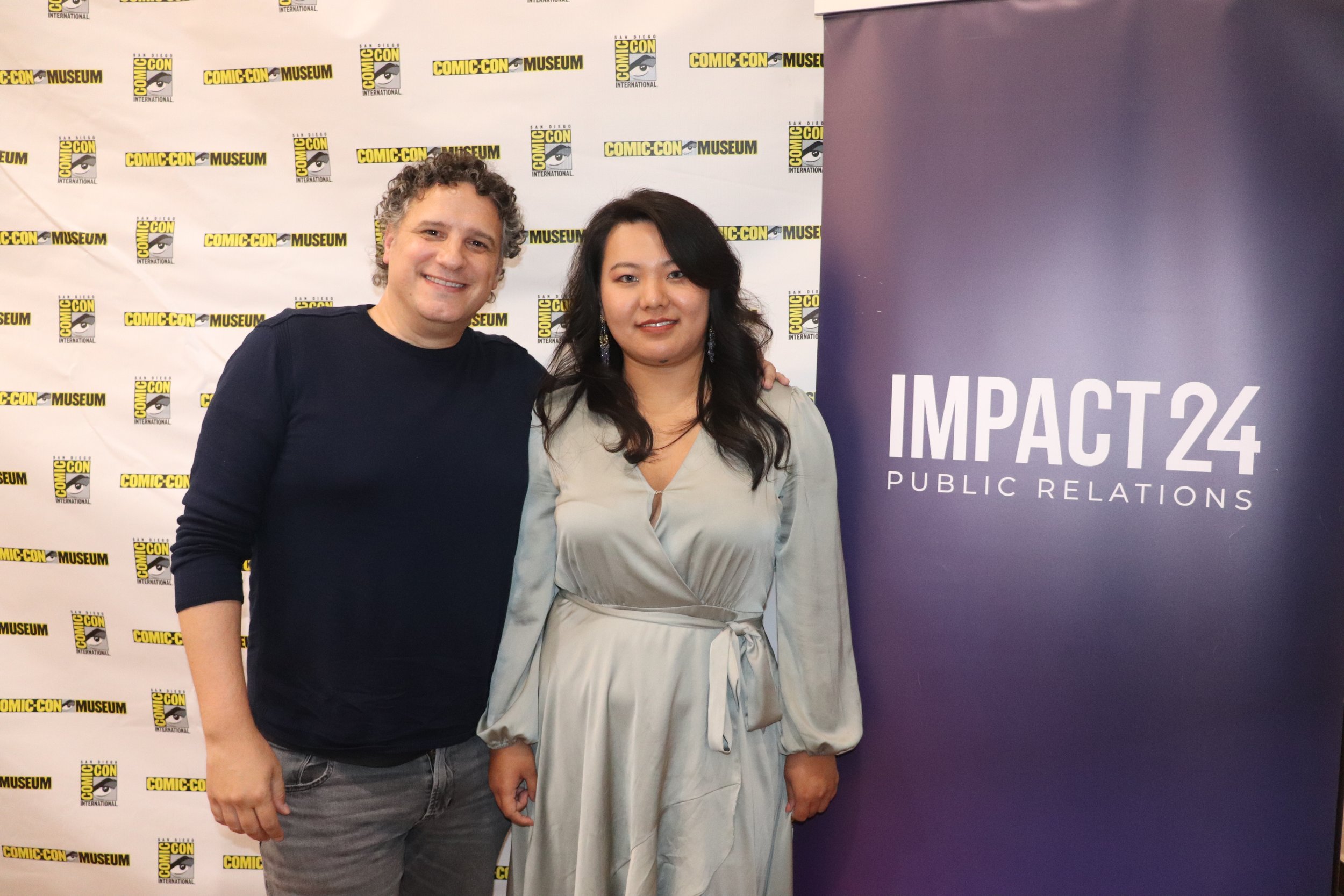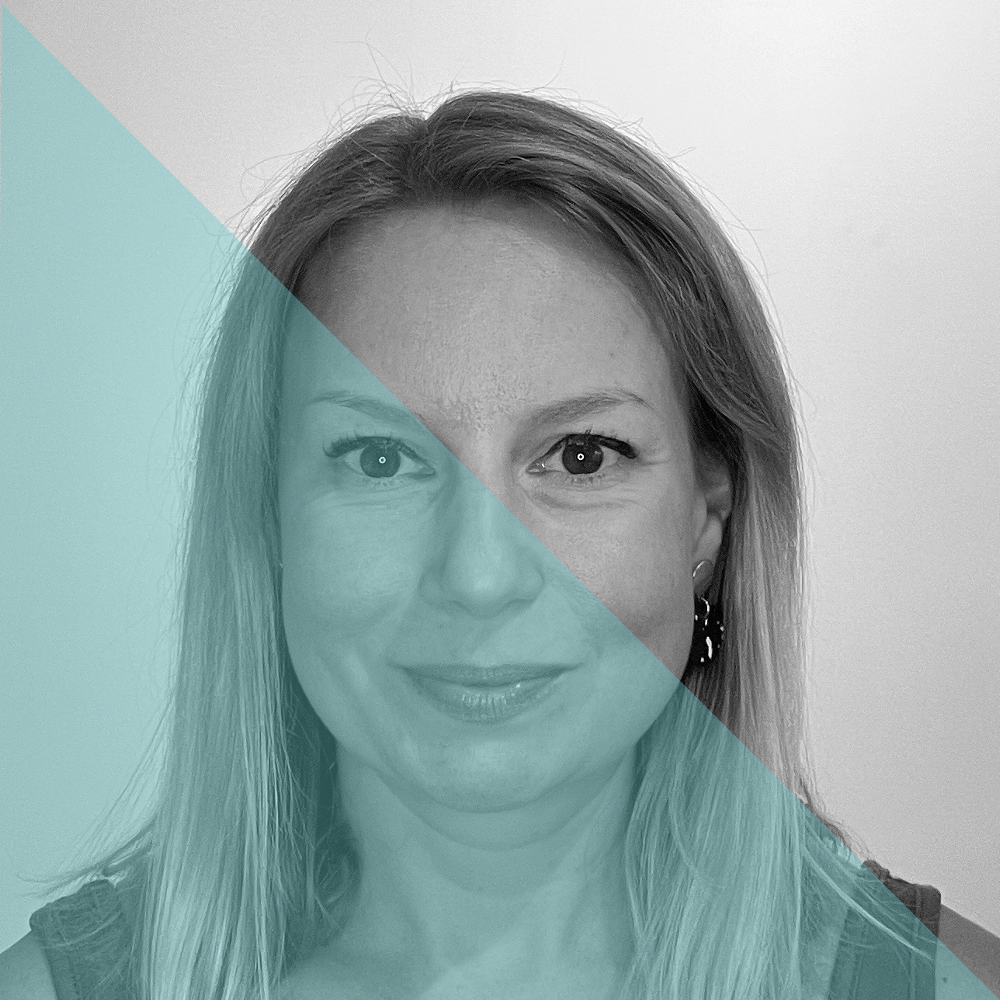WRITTEN BY KATE FINAN, CO-OWNER OF BOOM BOX POST
This month, the Comic-Con Museum in San Diego held a one-day symposium titled Storytelling Across Media which provided professional panels geared toward aspiring writers, artists, musicians, and media professionals interested in the art of storytelling. I had the pleasure of being invited to be a panelist on the topic of “Storytelling in Music and Sound.” They invited an array of industry professionals and asked us each to invite a collaborator of our choosing in order to delve into our collaborative processes of using music and sound to further our storytelling.
I was ecstatic to have been invited, and immediately thought of bringing Greg Nicolett, the underscore composer on Pupstruction, to join me. Greg and I have worked together for the last five years on three different projects including T.O.T.S. and Pupstruction for Disney Junior, and a fantastic pilot for a series about dinosaurs with magical powers, Talon. We and have a great working rapport and collaborate regularly both prior to and on the mix stage. Both series that we have collaborated on highly music-centric, and finding a harmonious way to weave the songs (written by the amazing Rob Cantor), the score (composed by Greg), and all of our audio elements (the dialogue, sound effects, foley, and backgrounds done by our Boom Box Post team lead by supervising sound editor, Tess Fournier) together to tell a succinct story that’s easily accessible to preschool kids has been one of the biggest challenges of my career as a re-recording mixer. I couldn’t do it justice without the collaborative thoughts and advice of the music team, our executive producers Vic and Travis, our Disney Junior creative executive Lori Mozilo, and the production staff who join us on the stage.
Thankfully, Greg accepted the offer be on the panel, and we made the trek down to San Diego for the day along with the other panelists: Sean Olson (Director/Editor, Camp Hideout) & Andres Boulton (Sound Designer, Camp Hideout), Jiarui Guo (Producer, Rusty Blade) & Pancho Burgos-Goizueta (Composer, Ordinary Angels), and moderator Kaya Savas (founder of film.music.media).
Upon arrival, some panelists realized that they knew each other from past projects or panels, while most of us were meeting for the first time. Regardless, we found that we all shared very similar visions for putting the creative integrity of each project first. I was inspired by the clips that were shown to showcase the panelists’ talents and the collaborative processes which each pair discussed from a different perspective. Although we all work in different genres, it was clear that each panelist approached their projets with not only great creative intent in their own work, but a willingness to open their eyes and ears to the work of others and to pitch in in ways that may be outside of their comfort zones.
I’ll let the video of the panel below speak for itself. Please check it out, and then read on for bonus content below!
Bonus Content!
Since we all had so much fun going off-script and spent a good amount of the hour freely talking about our experiences, the panel didn’t get to every single question for which we prepared answers. So, as a bonus, here are a few juicy tidbits that didn’t make it in!
What advice would you give to aspiring sound designers, composers, or filmmakers who are looking to build successful creative partnerships in the industry?
KATE: A lot of the post production jobs are done in tandem. So we’re really in our own bubble while creating our part. It’s key to have awareness that others are doing great work that also adds to the story, and that in the end it will all need to be combined. Not everything can be the loudest in the mix, or be the main focus at all times. BUT, everything plays its part and is important whether it’s taking center stage or not. Try not to be the person asking to have your own work displayed more prominently than others. Instead, take the time to appreciate others’ work and if you notice a moment when something else really shines, speak up and offer to have the focus moved to that. Having an eye for the culmination of all of the talents on a project is what makes you a valuable creative team member.
GREG: That everyone’s on the same team, and ultimately trying to make the best art possible. Make sure everyone who gives you a note feels heard; don’t just rush to your own defense. Also - choose your battles. In a final mix, time is usually really short. If you have three things you want to change in a scene, just pick your most important one. And if you’re a composer, don’t be afraid to offer suggestions on where music should be SOFTER as well as louder. Again, it’s all about maximizing impact.
In closing, could you share a key takeaway or lesson you've learned from your collaborative experiences that have had a lasting impact on your work?
KATE: Working with others and really digesting what’s important to them in telling a story has really helped to shape the different angles I’m able to take in my own work. Having Greg and his partner, Rob Cantor, on the stage for the mix has been a huge part of that. I’ve really come to appreciate that rather than taking an individual creative approach of “how can I make my work cool,” taking a more collaborative approach to answer “how can I serve the story here?” yields much better results.
GREG: I think my favorite thing about working with Kate is how good she makes my music sound! She’s in charge of the sound design as well as the mix, but she always seems willing to let music drive the action if it makes the project better.
